Today we are taking a launch-day look at the Intel 670p 2TB PCIe 3.0 NVMe SSD. Intel has sent us a 2TB drive for review, and promised a significant performance uplift from their previous generation product the 660p. We never reviewed the 660p, but we did take a look at the Intel 665p 1TB drive and we will be using that as a comparison point over the course of this review. The new 670p is still a PCIe 3.0 drive, and is designed around the Silicon Motion SM2265G controller, DRAM cache, and Intel’s 144-layer QLC NAND.
Intel 670p 2TB M.2 NVMe SSD
The Intel 670p 2TB comes in a single-sided M.2 2280 (80mm) form factor, very similar to its predecessor. Single sided designs are easier to cool, so that I view that as a positive overall.
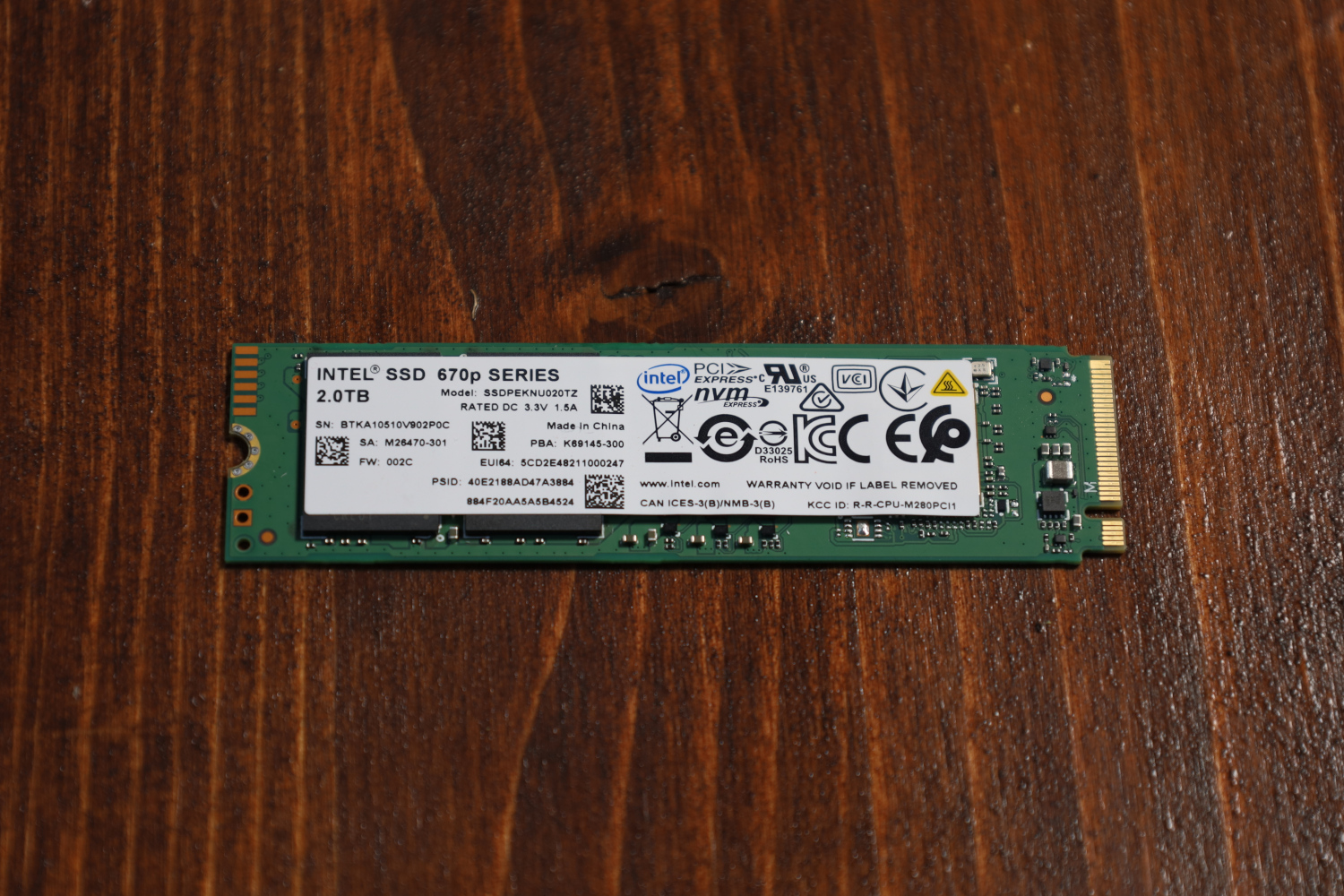
Beneath the label on the front of the drive is all the major components; two 144-layer Intel QLC NAND chips, one DRAM chip, and the SM2265G. The SM2265G does not appear on Silicon Motion’s website so we do not know much about its specific capabilities, plus Intel has informed us they have secret sauce in the firmware as well.
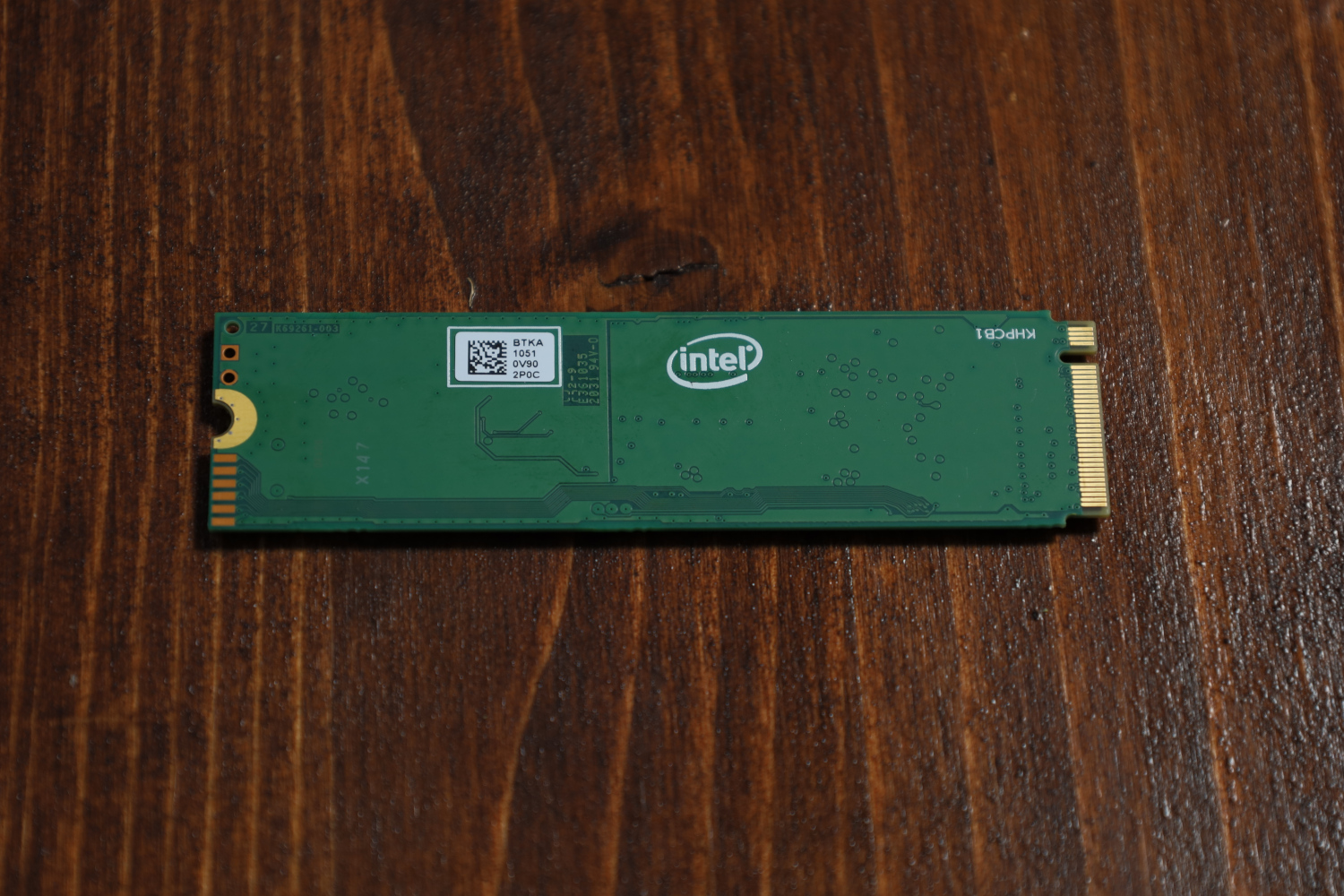
As a single-sided drive, the back is entirely barren. As a consumer drive, there is no power loss protection (PLP.) You can read a bit more about why PLP is important in some server workloads in our piece What is the ZFS ZIL SLOG and what makes a good one.
Intel 670p Specs
The Intel 670p line of QLC-based SSDs is available in 512GB, 1TB and 2TB capacities.
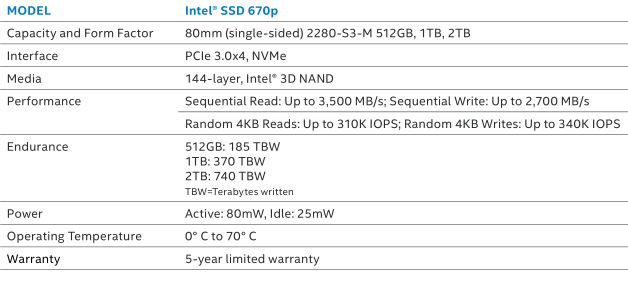
The 2TB drive we were provided is the top of the product stack, and thus far none of the product materials disclose any performance differences between the top capacity unit and the smaller drives. Normally we would expect the smaller drives to have lower performance, but as of now we simply do not know.
One interesting note is that Intel defines 2TB as 2048GB user accessible space, as opposed to 2000GB that is user accessible on every other 2TB SSD I have personally touched. It is a small difference, but worth noting.
In comparison to the 1TB 665p we looked at previously, the 3500MB/s read and 2700MB/s write specifications represent large upticks in performance. In the marketing materials provided with the drive, Intel claims a +82% sequential read increase and a +39% sequential write increase versus the 660p, and +23% random read and +14% random write.
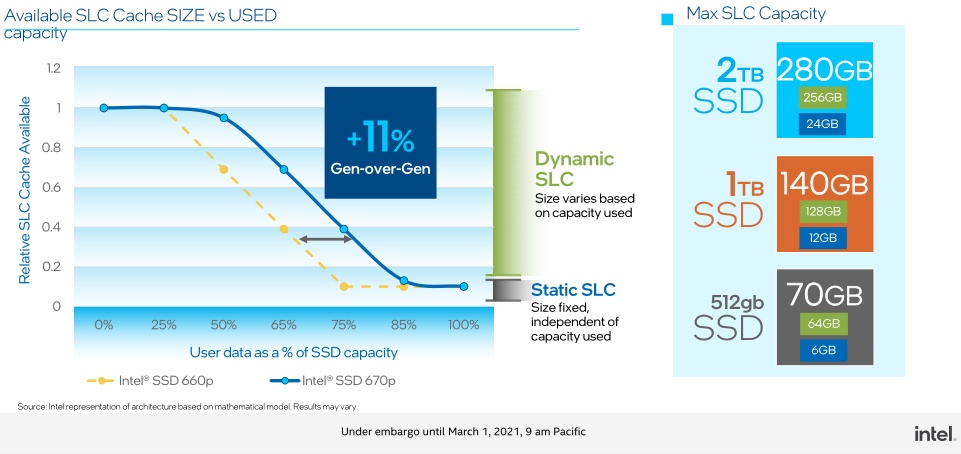
Part of the performance improvement comes from better static and dynamic SLC cache behavior on the new drives, as Intel was happy to point out in their product materials. These are significant generational improvements and we are looking forward to seeing the new drive in action.
As for endurance, the 2TB drive has a 740TBW endurance and the 1TB drive has a 370TBW endurance. The 1TB 665p came with a rated 300TBW endurance, so in contrast to the recently reviewed Sabrent Rocket Q4 drives Intel has increased endurance with this product generation rather than reduced it.
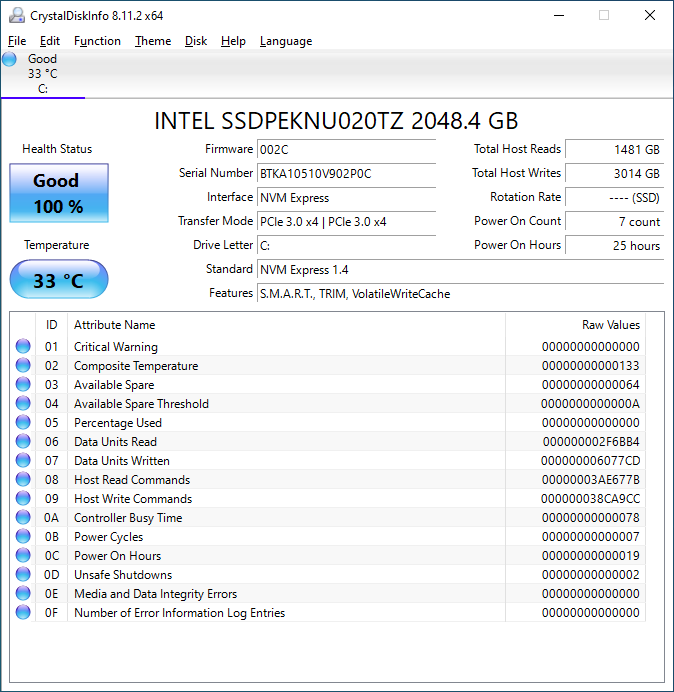
CrystalDiskInfo can give us some basic information about the SSD, and confirms we are operating at PCIe 3.0 x4 speeds using NVMe 1.4.
Test System Configuration
We are using the following configuration for this test:
- Motherboard: ASUS PRIME X570-P
- CPU: AMD Ryzen 9 3900X (12C/24T)
- RAM: 2x 16GB DDR4-3200 UDIMMs
Our testing uses the Intel 670p 2TB as the boot drive for the system, installed in the M.2_1 slot on the motherboard. The drive is filled to 85% capacity with data and then some is deleted, leaving around 60% used space on the volume.
Next, we are going to get into our performance testing.

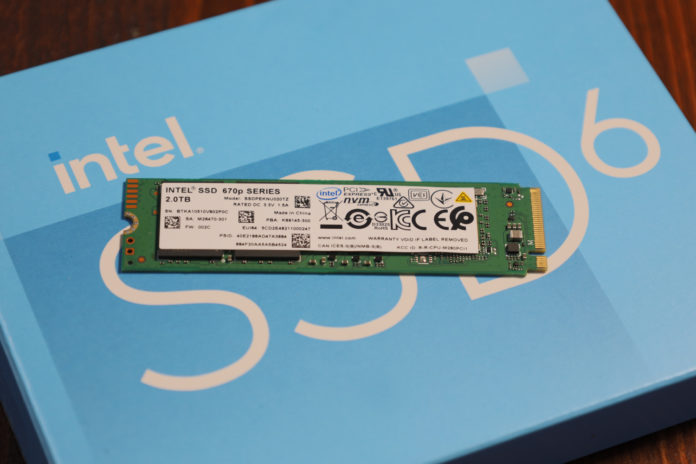



The 1TB 660p was regularly available for the $89 they’re quoting for the 512GB 670p, just insanity. I thought QLC was supposed to be dirt cheap, not more expensive than TLC.
I would put it down as simply an instance of MSRP not reflecting street price.
On page 1, you have TLC instead of QLC:
> The Intel 670p line of TLC-based SSDs is available in 512GB, 1TB and 2TB capacities.